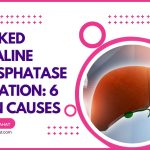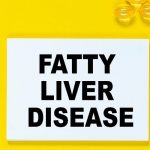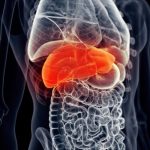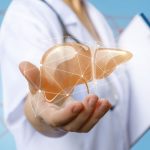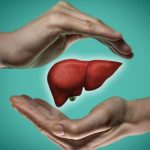What Causes Elevated Bilirubin with Normal Liver Enzymes? Gastroenterologist Explains.
Our content is not intended nor recommended as a substitute for medical advice by your doctor. Use for informational purposes only.
Elevated bilirubin levels with normal liver enzymes are common during routine blood work.
The causes of such conditions range from mild conditions such as Gilbert syndrome to severe diseases such as hemolytic anemias or biliary obstruction.
The most common causes of elevated bilirubin with normal liver enzymes include blood cell breakdown (hemolytic anemias), Gilbert syndrome, Drug-induced cholestasis, biliary obstruction, massive blood transfusion, and large hematomas.
Read our in-depth explanation of the symptoms, diagnosis, and treatment of each cause in this article.
1. Blood breakdown (hemolytic anemia).
Hemolytic anemia is a type of anemia that is entirely different from the famous iron deficiency anemia. In this type, your red blood cells undergo acute or chronic destruction faster than normal (reference).
When the red blood undergoes destruction, bilirubin is released (bilirubin is a part of hemoglobin inside the RBCs). As a result, your bilirubin levels become elevated while the liver enzymes are normal or mildly elevated.
Causes:
Hemolytic anemias are relatively common; common causes include (reference):
A. inherited hemolytic anemia:
- In this type, a gene defect causes abnormal RBCs or hemoglobin, resulting in chronic red blood cell (RBC) destruction.
- Examples include thalassemia and sickle cell anemia.
B. Acquired (secondary to disease or drug):
- Some medications include antimalarial drugs, paracetamol, sulfa antibiotics, penicillins, etc.
- Certain infections.
- Certain cancers and blood malignancies, such as leukemia.
- Autoimmune hemolytic anemia.
- Overactive spleen (hypersplenism).
- A reaction to blood transfusion.
- Mechanical heart valves.
Symptoms:
- Jaundice (yellowish skin, eye whites).
- The pale color of the skin.
- Occasional dark urine color (not frequent).
- Symptoms of anemia (fatigue, headache, dizziness, shortness of breath on exertion, fast heartbeats).
- The condition may be chronic (inherited anemia) or transient (such as infections or drug-related hemolytic anemia).
- The condition can be very mild (without jaundice and symptoms of anemia), such as mild cases of thalassemia (thalassemia traits). In such cases, you may have elevated bilirubin levels, and normal liver enzymes, without any other symptoms.
Diagnosis and treatment:
- Elevated bilirubin levels with normal liver enzymes should raise the suspicion of hemolytic anemia, even if there are no other symptoms.
- The presence of anemia and jaundice symptoms also increases the odds of hemolytic anemia.
- laboratory findings: anemia (low hemoglobin), increased total bilirubin, direct (conjugated) bilirubin increase, increased cell type called (reticulocytes) in the complete blood count, low haptoglobin,
- Investigations for the cause include bone marrow aspirate, hemoglobin electrophoresis, etc.
- Inherited hemolytic anemia often is chronic and may require a blood transfusion if the condition is severe (no definite treatment).
- Acquired hemolytic anemia treatment is often directed to the cause (for example, treating infections, stopping the offending drugs, immunosuppressive medications for autoimmune anemias, etc.).
2. Gilbert syndrome (a common benign condition that causes elevated bilirubin).
Gilbert syndrome (also known as Meulengracht) is the most common inherited disease that causes asymptomatic elevated bilirubin with normal liver enzymes.
About 4-16% of people have Gilbert syndrome (reference). This means at least one in every 20 persons has this genetic condition.
Patients with Gilbert syndrome often have a family history of the condition. As a result, most cases are discovered accidentally.
Symptoms:
- Most cases are asymptomatic.
- Some people may notice a slight jaundice tinge (yellow discoloration of eye whites or the skin).
- The lack of symptoms such as jaundice is often because the degree of bilirubin elevation is often very mild.
- Jaundice appears when the bilirubin levels increase by triggers such as:
- Infections (even mild infections such as the common cold may increase bilirubin levels).
- Fasting.
- Dehydration.
- Lack of sleep.
- Gilbert syndrome is often discovered during routine blood work (elevated bilirubin with normal liver enzymes).
- Often, the disease has no long-term effects on your liver. People continue a lifetime without any significant liver damage or complications.
- The only issue is that people with Gilbert syndrome have a higher risk of developing side effects from certain medications, such as anti-HlV (anti-proteases), chemotherapeutic medications, and paracetamol.
Diagnosis and treatment:
- Your doctor suspects Gilbert’s syndrome when you accidentally discover mildly elevated bilirubin with normal liver enzymes or if you have occasional jaundice during illness or fasting.
- The bilirubin levels are only mildly elevated (total bilirubin is often less than 3 mg/dL.
- Your doctor will diagnose Gilbert’s syndrome based on the following:
- Persistently elevated bilirubin with normal liver enzymes (mainly the unconjugated or indirect type).
- Absences of evidence of hemolytic anemia (normal blood count, reticulocyte count, etc.).
- Normal liver enzymes (ALT, AST, Alkaline phosphatase.
- Genetic testing may confirm the condition but is usually not needed.
- NO Treatment is needed, and the condition is benign.
3. Medications.
Many medications affect the liver. Most of them cause transient alternation of the liver function, usually asymptomatic or mild and temporary.
Drugs can affect the liver by different mechanisms:
- Some may cause isolated elevations in the liver enzymes with normal bilirubin (called hepatitis pattern).
- Others may cause the opposite; Elevated bilirubin with normal liver enzymes (cholestatic pattern).
- Some may cause elevations in liver enzymes and bilirubin (mixed pattern).
The condition of increased bilirubin due to certain medications is called (Drug-induced cholestasis).
Too many medications can cause cholestasis with elevated bilirubin and normal ALT and AST levels. Always review any recent or chronic medications if you have unexplained elevated bilirubin.
Examples:
- Some antibiotics, such as ampicillin, nitrofurantoin, rifampin, and others.
- Cyclosporine.
- Anabolic steroids.
- Oral contraceptive pills.
- Chlorpromazine.
- Imipramine.
- Gold salts.
4. Obstruction of the bile duct (early stages).
Bilirubin is secreted from the liver cells into the duodenum (the early part of your small intestine) through bile ducts. Bilirubin may become elevated when a stone from the gallbladder slips into the main bile duct (common bile duct or CBD. Moreover, other conditions may cause bile obstructions, such as pancreatic head cancer and bile stricture.
The condition is often acute, with severe abdominal pain (biliary colic) and a rapid increase in jaundice and bilirubin levels.
The bilirubin is elevated with normal liver enzymes during the early stages of obstruction.
However, the liver enzymes (ALT and AST) become elevated due to inflammation of the stagnant bile (cholangitis). Therefore, Therefore, ALP is a useful test for such conditions as it often becomes significantly elevated with a bile obstruction.
Symptoms:
- The bile obstruction often causes dramatic symptoms such as severe abdominal pain and jaundice; It is an unlikely cause of elevated bilirubin if you are asymptomatic.
- Sudden onset of right upper abdominal pain (biliary colic). The pain often is a severe ache and may last for hours.
- The pain may be felt in the right side of the back and right shoulder.
- It is often associated with severe nausea and vomiting.
- Acute onset jaundice (yellowish skin and eye whites).
- Clay-colored poop due to the lack of bile in the stool.
- Dark or tea-colored urine.
- Itching.
Diagnosis and treatment:
- Laboratory testing shows elevated bilirubin (mainly of the conjugated type), normal liver enzymes (ALT and AST) in the early stage and elevated alkaline phosphatase.
- Imaging: abdominal ultrasound, CT, or MRI may show the stone inside the common bile duct.
- A particular type of MRI with contrast called the MRCP is highly beneficial in diagnosing the conditions and the cause of obstruction.
- The treatment is often directed towards relieving the obstruction with a particular type of endoscopy called (Endoscopic Retrograde Cholangiopancreatography or ERCP).
- A stent is often inserted into the CBD during ERCP to relieve the obstruction.
5. Massive blood transfusion.
Patients who receive multiple units of blood may have an isolated increase in bilirubin levels with normal liver enzymes.
Patients with massive bleeding during road traffic accidents, operations, or peptic ulcer bleeding may need multiple units of blood quickly.
So, any recent history of taking blood may cause isolated hyperbilirubinemia with normal transaminases (liver enzymes).
6. Hematoma reabsorption (traumatic, after operations).
People with internal bleeding or large hematomas under the skin or inside joints may also slightly increase their bilirubin levels.
The hematomas are formed of red blood cells. Your body will gradually absorb the hematoma by absorbing the dead RBCs contents into the circulation (including bilirubin).
Common examples include:
- Intraabdominal hematoma due to blunt trauma or road traffic accidents.
- Hematomas inside big joints, as in patients with hemophilia.
- Hematomas after surgery.
7. Other rare conditions.
Other rare diseases and genetic conditions may lead to an isolated increase in bilirubin levels with otherwise normal liver enzymes and function tests.
Examples include (reference):
.
Related:
7 Causes of slightly elevated bilirubin levels in adults, explained.
Dangerous bilirubin levels in adults (according to the cause).
- Evidence-based
- Written by a doctor.

Related Posts:
- 5 Causes of Elevated Liver Enzymes & Negative Ultrasound
- Typical & Atypical Bilirubin levels in cirrhosis…
- Does the pancreas Produce bile? & Why bilirubin is…
- 8 Warning Signs of a Dying Liver (Hepatologist Explains).
- Fatty Liver Pain: Causes, Mimics, and Treatment;…
- Liver Complications after Bariatric Surgery.
